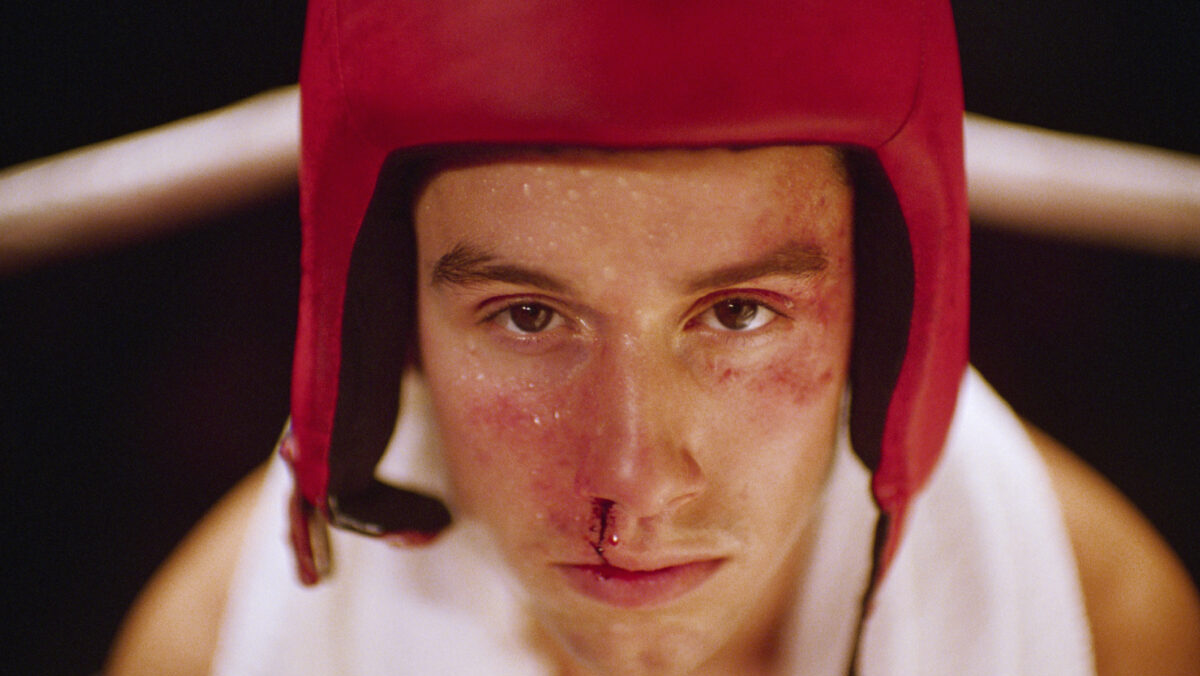After a bruising response to Chalice’s Julimar PGE study, is the ‘green metals’ project still “world class”?

Pic: Randy Faris/Corbis via Getty Images
- Chalice Mining shares tumbled 25% yesterday in a bruising response to the scoping study for its Gonneville nickel, copper and PGE discovery
- Mine, to be constructed by 2029, could churn through 30Mt of ore a year on farmland near Perth
- PGE expert suggests mine will stack up if Chalices take the high grade route
It was the catalyst for a 25% cratering in the shares of one of Australia’s hottest exploration plays, but Chalice Mining (ASX:CHN) managing director Alex Dorsch insists the company’s initial scoping study on its famous Julimar nickel, copper and platinum group elements discovery is a ‘robust’ launching pad for what will be a multi-billion dollar development.
Located just 70km northeast of Perth on Chalice-owned farmland adjoining the Julimar State Forest, the question marks over Julimar and its 1.9km long Gonneville deposit have until now been around Chalice’s social licence and ESG outlook.
But doubts could well be shifting to economics, with analysts querying Dorsch on a call yesterday about price assumptions for its key commodities that run well above current spot levels and the discount rate used in a study which suggests the project will generate as much as $9.9 billion of free cash over its life.
The numbers for the Tim Goyder backed developer are thus.
Chalice plans to mine an open pit and build a two-step processing plant costing between $1.6-2.3b to execute what will turn either 15Mt or 30Mt of ore a year into 280,000t of palladium, platinum and gold (3E), 9000t of nickel, 10,000t of copper and 800t of cobalt or, at the higher level, 470,000tpa of 3E, 16,000t nickel, 16,000t copper and 1400t of cobalt.
The whole thing would generate free cash of between $6.6-9.9b post tax with an IRR of 26% at a discount rate of 6.5%, with payback in two years.
Chalice has been a market darling for three and a half years, shooting into the ASX 200 after making the shock Julimar find in early 2020.
But yesterday’s fall means its share price is now down over 60% from highs of $10.12 in November 2021, shortly after it posted the maiden resource at Gonneville confirming the deposit as the largest nickel sulphide discovery in Australia in two decades and our first PGE deposit of global repute.
Location, Location … Location?
Chalice’s plan involves digging up an open pit that, in the 30Mtpa scenario, would stretch 1.9km long by 1.5km wide and 600m deep by the end of its 18-year mine life — around 2047 if mining begins in 2029 as planned.
Located on the edge of a State Forest and so close to Perth, it is a sensitive proposal from an ESG perspective, something that will be tested when Chalice begins approvals next year with WA and Federal enviro departments.
Dorsch pointed to the success of Newmont’s Boddington copper and gold mine, one of Australia’s largest gold producers churning through 40Mt of dirt a year in similar turf to Perth’s south, as evidence on the State’s acceptance of mining in areas close to the metropolitan region.
“We are committed to building an operation here in Gonneville, using the principles of strong environmental stewardship. This will be a unique opportunity to show that a mining operation can coexist with local communities and an environmentally sensitive area. We’re not envisaging any impact on the Julimar State Forest,” he said.
“In fact, the mining operation has been designed here deliberately to be constrained to our farmland only.
“We’re forecasting a low carbon intensity and we’re doing all the work that you’d expect us to do around biodiversity, baseline studies and an investigation of offsets required to really ensure … this is a an accepted operation in the context of its location.”
The argument for Julimar has always been that it will be a critical project in the context of the energy transition, with Dorsch expecting the lower carbon intensity of its nickel sulphide output compared to Indonesian laterites will be attractive to Western carmakers.
Its palladium will also present an alternate source to Russia and South Africa, the dominant producers of PGEs, with forecast life of mine costs of US$160-230/oz 3E regarded as being in the second quartile of the cost curve.
Chalice remains in the midst of a strategic partnering process which has, according to Dorsch, drawn interest from large mining houses, OEMs and industry players, some of whom are enticed by the prospect its output could be compliant with tax incentives in the US Inflation Reduction Act. He described Julimar as a “very important asset for the Western world”.
“The world is incredibly reliant on Russia and South Africa, as you’ve seen in the cost curve for palladium and PGEs in general, but also becoming very reliant on Indonesia and China for nickel,” Dorsch said. “And so the Western world is very much gravitating to strengthen strategically significant supply chains like this, and the Australian government has committed to support the critical minerals industry.”
On the financials, Morgans analysts — who have an $8.20 price target on Chalice — said with $670m-1.1b in annual EBITDA the study, which compared to its pre-report market cap of $2b ($1.5b now, yikes), showed the ‘size of the prize’ if Julimar can be delivered.
Price points
But third party forecasts supplied by AME and used as price assumptions in the scoping study have caused some angst among investors.
A nickel assumption of US$24,000/t is higher than today’s price, US$11,000/t for copper would be an all time high, cobalt at US$46,000/t is also above today’s rate.
US$2000/oz palladium compares to around US$1200/oz currently, while at US$1900/oz gold is near current levels though they are high by historical standards, and platinum prices of US$1000/oz are around today’s somewhat depressed levels.
Typically studies err on the conservative side to show a mining project can prosper through the cycles, though they could of course change by the time it’s in production.
A PFS has been commissioned, due in 2025, and the mine won’t hit FID until 2026, with construction forecast to take three years beyond that. Dorsch insisted the market of today was very different to what will come and that the mine design parameters were more conservative.
“The mine design parameters we want to be more conservative because obviously the operation needs to survive inevitable commodity cycles. If you look at the 15 million tonne per annum case, input assumptions into the mine design, they are significantly lower than spot prices,” he said.
“So we believe there is a robust project there that survives even lower prices than what we’re seeing today, but as we know, the prices cycle and trying to predict them, particularly in the in the context of PGEs, nickel, cobalt, etc.
“These are very hard to predict metals because the demand-supply situation is quite honestly transforming and likely to transform things further as the energy transition really sort of comes to bear.
“Our view is that today in spot terms, we’re really on the margins of knocking out a significant amount of that South African PGE supply given that they need US$1300 to just cover their cash costs. That obviously doesn’t allow for covering their sustaining capex, their development capex and the actual margin to keep them in business.
“So I think our view is that it has to be much higher than US$1300/oz long term, because otherwise you’re implying a significant shrinkage in the market and we’re just not seeing that in the demand outlook for these metals.”
Questioned about a 6.5% discount rate, a measure that factors in the cost of raising capital, Dorsch said it measured up with similar base metal operations in WA, that Chalice expected to be able to access low cost debt funding and that it wasn’t placing too much emphasis on NPV “at this stage”.
Chalice Mining (ASX:CHN) share price today
Processing options
The other complexity around Gonneville is in its processing and metal recoveries.
Chalice intends to initially process shallow oxide ore into a palladium, platinum and gold dore before using hydrometallurgical processing to produce a nickel and cobalt mixed hydroxide precipitate along with flotation to produce a copper, palladium, platinum and gold concentrate to send to copper smelters.
While both are well understood they are not normally married, with life of mine recoveries of 77-78% expected for palladium and 41-43% for nickel, 43-45% platinum, 66% gold, 76-80% for copper and 40-42% for cobalt.
Dorsch said the technologies are well understood individually but that Chalice was “hybridising” a base metals and precious metals flowsheet with “a lot of optimisation” to be done in future studies.
While the initial plan is to go open pit entirely, Chalice will spend much of the next 12 months looking at opportunities to incorporate higher grade underground mining in the early stages of the project.
Like nowhere else
Despite the sell-off, PGE expert Keith Goode, a well known Australian resources expert and geologist who runs analysis firm Eagle Research Advisory, said Julimar still boasts palladium numbers in its deep drilling that “don’t exist anywhere else”.
He’s a strong advocate for the idea that Gonneville’s best development prospect is underground, where Chalice could selectively mine higher grade portions of its 1.9km long, 800m deep resource.
“They’ll definitely go underground,” he suggested.
“I’ve seen some of that drill core on the underground and you’ve got grades that are like 40g/t of palladium out there, those kind of numbers don’t exist anywhere outside of WA.
“I’ve never seen those kind of numbers ever, in any other PGE orebody in the world.”
He said the 23% sell-off yesterday was a “kneejerk reaction”, with the $1.6-2.3 billion capex bill hardly unusual for a project of its size and processing method in WA.
Goode said De Grey Mining’s (ASX:DEG) Hemi gold project could come back with similar capex numbers, given its scale and the fact it is looking also at using pressure oxidation autoclaves to process sulphide rich resources.
Liontown’s (ASX:LTR) Kathleen Valley lithium mine and Lynas’ (ASX:LYC) Kalgoorlie rare earths cracking and leaching plant are also creeping towards the $1b mark in terms of capex.
First stab
In Goode’s opinion, Gonneville would be better developed conventionally like South African PGE projects, where higher grade sulphide ore is first sold to a third party smelter to generate income before constructing a smelter and eventually a refinery with the cash flows over time.
That would leverage what he says is a province scale opportunity at Julimar.
Currently Gonneville, which has high grade intercepts reported beneath the 800m base of its 560Mt resource, covers just 7% of the Julimar Complex, a 26km long structure which extends beneath the Julimar State Forest.
Beyond that is hundreds of kilometres of relatively unexplored territory on the western edge of the Yilgarn Craton, a geological structure thought to be barren relative to the historic gold, lithium and nickel rich Eastern Goldfields on the other side of the massive domain.
He described the study as a ‘first stab’, with the project’s scope likely to change especially after Chalice completes is strategic partnering process for Julimar.
“It’s just a scoping study, it’s not your final design route,” Goode said.
“So basically, you’ve got to do the PFS which really starts to hone down which way you’re going to go.
“Are you going to go the Hydromet route, or are you going to go conventional?”

UNLOCK INSIGHTS
Discover the untold stories of emerging ASX stocks.
Daily news and expert analysis, it's free to subscribe.
By proceeding, you confirm you understand that we handle personal information in accordance with our Privacy Policy.








